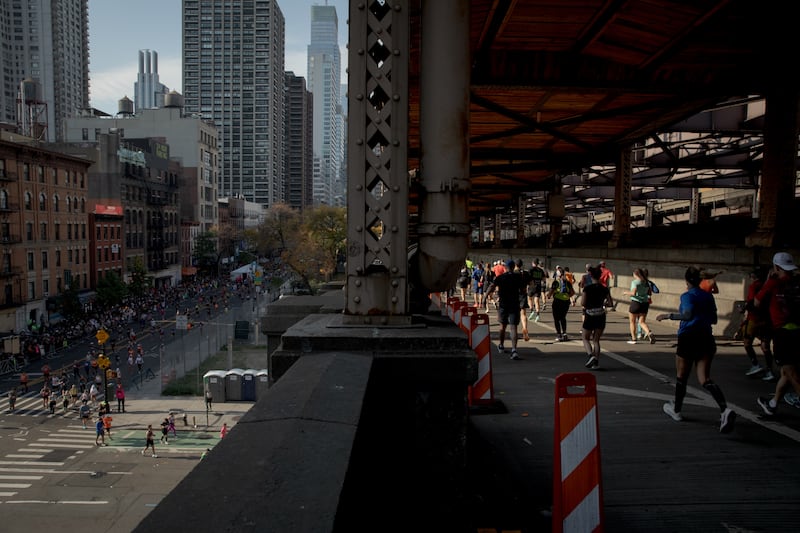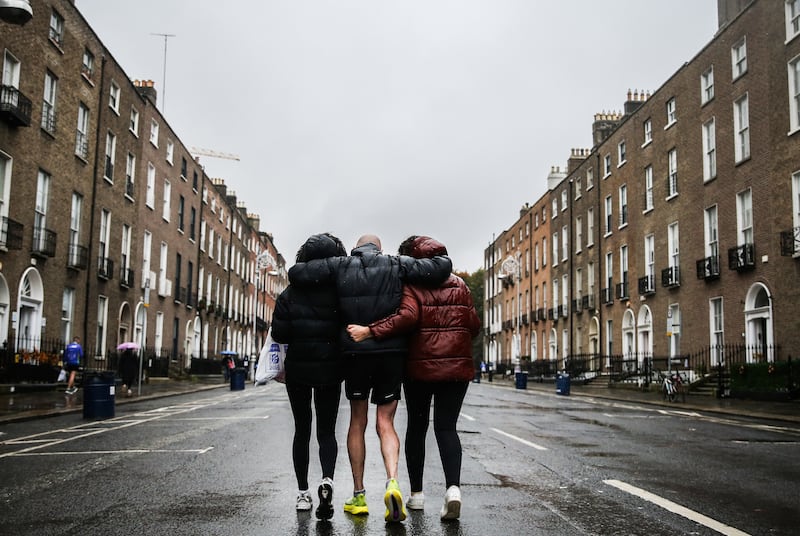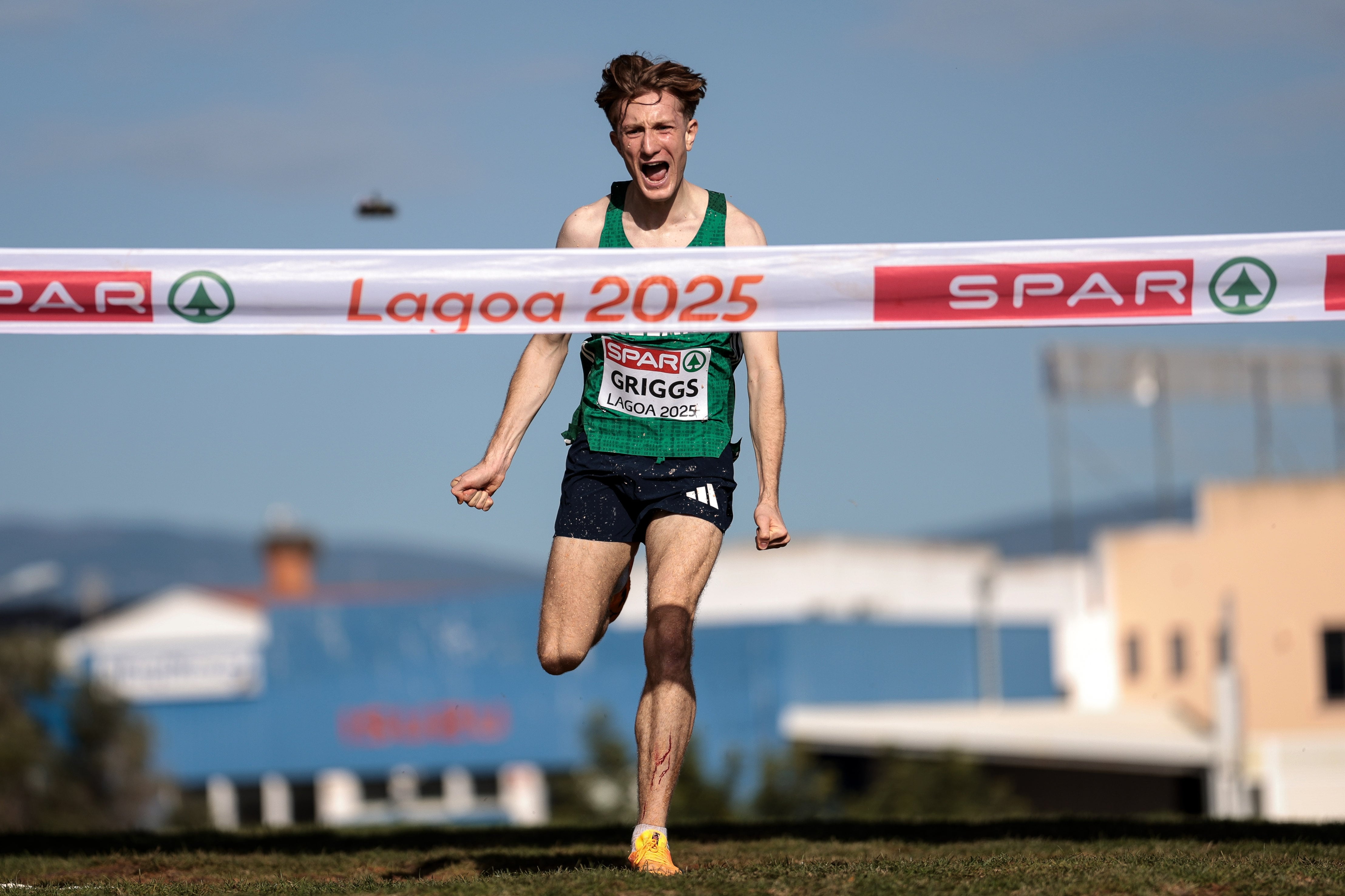If you believe some stories about the running of the first Dublin Marathon in 1980 it was a bit like getting the Apollo 11 space mission off the ground. Plenty of loose ends were being tied up right until the last minute, albeit with less drastic consequences if something went wrong.
It had first sprang from the mind of Louis Hogan, then a senior producer with RTÉ Radio, who accidentally “ran” into the New York marathon while on holiday in the Big Apple in 1978. Almost straight away he sensed the opportunity to run something similar in Dublin.
That event had been going since 1970, when Fred Lebow, founder of the New York Road Running Club, and inspired by the old Yonkers Marathon, lured 127 club members to run four laps of Central Park’s six-mile interior, followed by the two-mile 72nd Street circuit.
Six years later, to coincide with the bicentennial celebrations, Lebow convinced the New York City authorities to allow him to take his race through all five city boroughs – starting on Staten Island, and into Brooklyn, Queens, Manhattan, the Bronx, and back into Manhattan to finish in Central Park. The rest is big city marathon history.
READ MORE
That route has essentially remained constant in the years since, while the race numbers continue to astonish; last Sunday’s 52nd running of the event had 51,933 starters, with a remarkable 51,402 finishers, including 16,748 finishers from 148 countries – the race given a proper city embrace and lots of loving support.

Hogan realised to get his event going properly he’d also require a co-founder: someone who knew how the city was run, and who also knew about running.
Enter Noel Carroll, the two-time Olympian over 800m, by then Dublin Corporation’s first official spokesman, and later chief executive of the Dublin Chamber of Commerce. No one understood both those running angles better than Carroll, who insisted the race start and finish on St Stephen’s Green, right outside the Department of Foreign Affairs.
To further understand the event, Carroll ran in it too, all 26.2 miles, even though well beyond his distance. That first race had 1,421 finishers; by 1982 it was up to 8,738. For 1993, it started and finished outside the GPO on O’Connell Street, that race won by John Treacy, his last marathon.
Carroll’s sudden death 25 years ago, three days before the 1998 Dublin Marathon, proved a great shock and loss to many people, including organisers of the race. The race route had always been something of a moveable feast, only without Carroll’s influence, more of it was moved further out of the city.
[ The Dublin Marathon is not about the running, it’s about the peopleOpens in new window ]
For my first running of the Dublin Marathon, in 2001, it finished in Smithfield Square, and despite being born and raised in this city, ran through plenty of parts completely unknown to me. It wasn’t always pretty, not just the look on the runners’ faces.
For the last 10 years the race start has been on Fitzwilliam Street Upper and the finish has been on Merrion Square North, bringing some course consistency and familiarity in line with almost every other city marathon in the world; by now there are about 800.
My marathon running experience has since taken me to just some of them, including London, New York, Madrid and Honolulu, plus the original marathon route into Athens (which nearly killed me by the way) and also without exception they left a lasting sense the city was fully embracing and supporting the event, not just around the start and finish access.

Only for Dublin that’s now a running battle every year, highlighted again by the correspondence from Dublin City Council and the National Transport Authority (NTA) demanding organisers take the finish somewhere away from Merrion Square North for next year’s race, given the “disproportionate adverse impact” the race has on public transport services. The apparent suggestion being they take it somewhere outside the city centre entirely – as in take the Dublin Marathon outside Dublin.
It’s a both ridiculous and embarrassing proposition on all fronts. At least there is some common sense expressed on the matter by Thomas Byrne, Minister of State for Sport, who told Today with Claire Byrne on Tuesday morning that the public transport concerns are “a bit overstated”, and while further engagement is required, at least in his view the Dublin Marathon “would be a city centre event, just like it is in practically every other major city in the world”.
No one expects any big city marathon to happen without some disruption to public transport; if Dublin City Council and the NTA were so concerned, might they not have intervened on the cancellation of all northside Dart services, throughout the Bank Holiday weekend, due to engineering works.
The Berlin Marathon, first run in 1974 and now one of the world’s largest (with 43,010 finishers last September) gives all entrants free public transport on their arrival, departure, and throughout the day of the event. Beyond the physical and mental benefits of marathon running, Berlin also “gets” all the benefits it brings to the city’s commerce.
There will always be some disruption along the race route, which is why my mother, who lives directly on the Dublin route in Clonskeagh, parks her car on a side road around the corner the night before, allowing her access away via another route, if so required.
Most city marathons also sell themselves on famous landmarks along the route: the Paris marathon starts along the Champs-Élysées; London finishes in front of Buckingham Palace; Tokyo naturally passes the Imperial Palace; and the Boston Marathon, running since 1897, finishes in the popular public space that is Copley Square.
In that sense Dublin continues to miss out on so much, and should be adding more of the city back rather than taking it away. And maybe the only way for the Dublin City Council and the NTA to understand that is to actually run in it themselves.


















